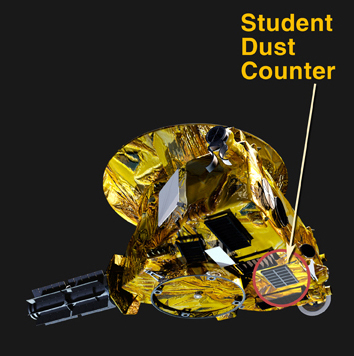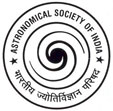An 11 year old girl, well versed in classical mythology of ancient Rome and Greece, learned from her grandfather, of the discovery of a new planet. The 11 year old was Venetia Burney, and the year was 1930.

This new found “planet” had been elusive for decades, avoiding the many searching telescopic gazes which had been bent towards finding it. Her young and imaginative mind made an instant connection between that elusive nature of this new found object, and the lore related to the possession of a cap of invisibility by the Roman/Greek god Pluto, and suggested this as a name for this new found object. She may have been propelled into making a bid for naming a new found object, following family tales of the success which attended her great uncle Henry Madan’s offering the names Phobos and Deimos for newly discovered moons of Mars in 1877, to Asaph Hall, their discoverer.
Onwards to the discovery itself. That was made by 24 year old Clyde Tombaugh, an amateur Astronomer. A keen amateur Astronomer, who had been building his own telescopes for some years and making meticulous observations of Mars and Jupiter. His hand drawings of these observations, sent to the Lowell Observatory, got a job for him there and the possibility of working with the observatory telescopes.
And then it was that a new “planet” swam into his ken, and no mistake.
A long awaited and searched for planet, it was.
Perturbations in the orbit of Uranus, not completely explained away by the discovery and presence of Neptune, led Percival Lowell to predict the presence of a possible trans Neptunian object Planet X. Tombaugh’s work in this search involved meticulous comparisons of images taken of segments of the sky repeatedly. Blinking these images taken of the same segment of the sky at different times, using a physical blink comparator. This process was to be undertaken for many small segments of the sky.
A similar procedure, now made easier through computer processing, is used by students participating in the International Asteroid Search campaign (IASC), where many student asteroid discoveries have been made. There are a number of these discoveries being made by school students in India under the All India asteroid search campaign which obtains the original data for blink comparisons from the IASC.
Back to Pluto. It seemed that it had been “one over eight” too many! The discovery of one of its moons Charon, in 1978, allowed an estimate of Pluto’s mass to be made, which turned out smaller than even that of our own Moon! A question mark may have been hanging over the nomenclature of Pluto as a planet from that moment. A question mark which became larger and larger when Eris, a trans Neptunian object was discovered larger in mass than Pluto. At this rate, continuing to call Pluto a planet may have resulted the roster of planets to be increasing every few years as more and more such objects would be discovered, a likely prospect.
In August 2006, the International Astronomical Union came up with a physical definition of the word planet, which, left poor Pluto, out in the cold! The new physical definition calls any object a planet that is in orbit around the parent star, is sufficiently massive that its inward gravitational pull makes the object spherical and also clears its own neighbourhood of matter – that is, the planet is the Monarch of all it surveys, in its own backyard – it has to be the dominant body in its neighbourhood.
Pluto and other dwarf planets, orbit the Sun and are sufficiently massive to be spherical, but, not sufficiently massive as to be dominant objects in their own neighbourhood.
The young, world wide, were up in arms in defence of poor Pluto. There was an enormous outpouring of empathy for this celestial object which had caught so much of the imagination of young minds all through.
A planet by any other name, as Shakespeare might have reminded us, remains just as enduringly interesting.
It was in the year 2006 itself that the New Horizon mission, whose closest approach to Pluto is imminent, was launched.
And the Young ruled once again! The mission carried with it, a 1.6 kg dust sensor payload built by undergraduate and graduate students of the University of Colorado. The Student Dust Counter (SDC) (Now known as the Venetia Burney Student Dust Counter) saw its design, testing, calibration and operation through the hands of students, and is continuing to “gather dust” , on its way, near, and onwards away from Pluto, in the New Horizons Mission.

Why would one gather this dust, anyway? Well, it is precious stardust, after all. It yields rich dividends in the form of an understanding of the distribution of left over debris material in the solar system and there on, an understanding of star formation processes themselves.

Preliminary results of the gathered dust on this instrument from the time a little after the New Horizons crossed the orbit of Jupiter to the time when it crossed the orbit of Uranus, have been published in the Lunar and Planetary Science conference, by this student team, and kudos to them for this grand adventure.
The closest approach of the New Horizons Mission on the 14th of July, is a moment in time of interest worldwide arising from that one physical fact of the spacecraft being at closest approach to Pluto at that time. However, in a flyby mission, unlike that of insertion into orbit, this moment in time is not of as much interest to Science as are the cumulative days around this moment of close approach which gather very interesting data up close and personal from this dwarf planet and its moons.
There is already a rich harvest of this data, from the mission and more is surely to be expected. A harvest which is only likely to feed the enduring interest the “planet” has justly generated since it first swam into our ken.
Author: Rathnasree N. (Nehru Planetairum, New Delhi)
Extras:
Featured Picture : A young Clyde Tombaugh – discoverer of Pluto
Listen to an interview with Venetia : < here >
Find the Latest Official News here : http://pluto.jhuapl.edu/News-Center/index.php
Images:
© 2015 The Johns Hopkins University Applied Physics Laboratory LLC.
© 2015 Regents of the University of Colorado

